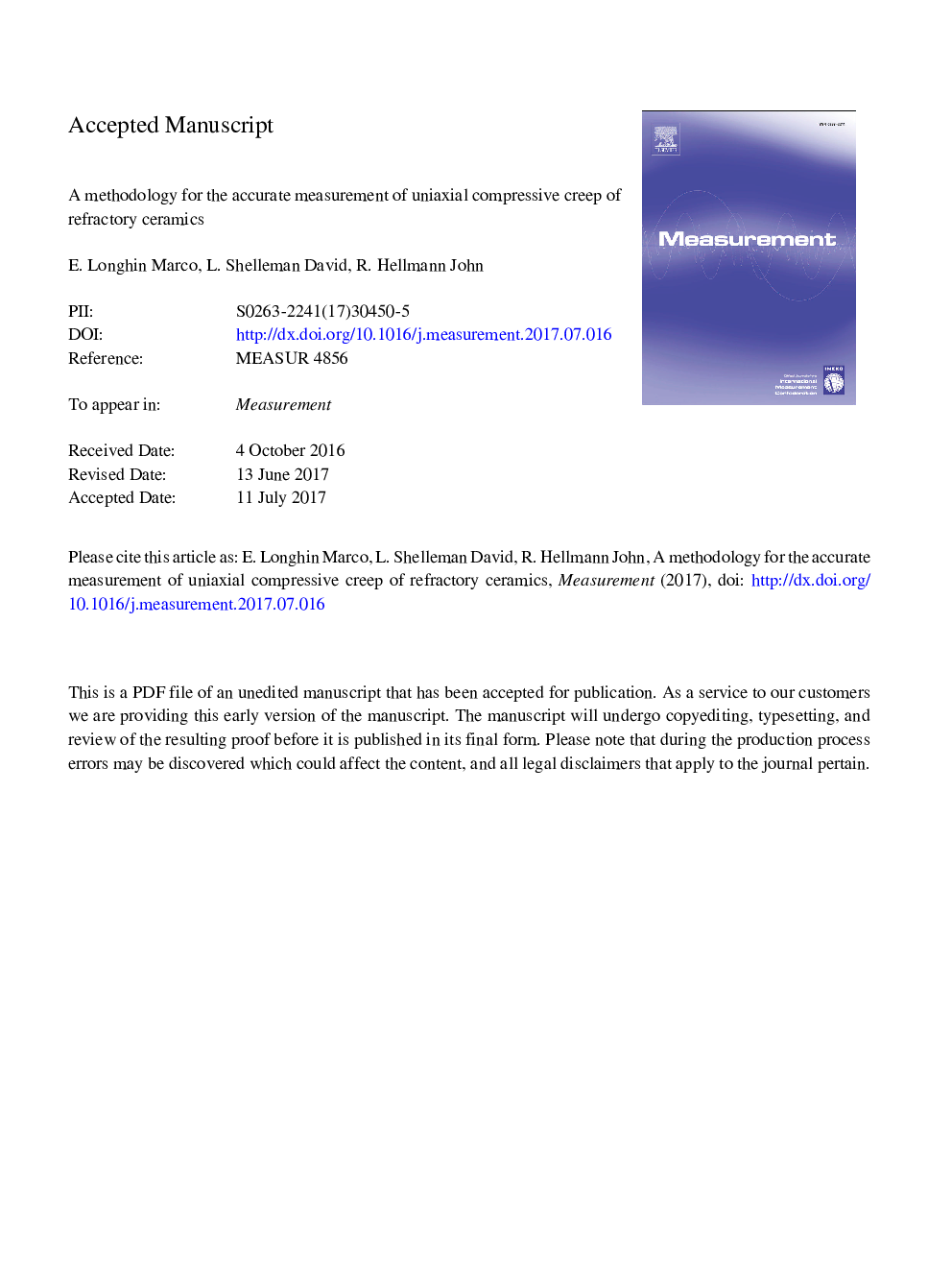| Article ID | Journal | Published Year | Pages | File Type |
|---|---|---|---|---|
| 5006351 | Measurement | 2017 | 34 Pages |
Abstract
The uniaxial compressive creep experiment allows identification of which mechanism controls creep and to predict material lifetime under high temperature and low stress service conditions. Firstly, we detail a measurement apparatus developed in our laboratory to measure compressive creep for metals and ceramics, focusing on some important features to produce reliable measurements. Then we describe a protocol to analyze data in order to limit misinterpretation. Multi-stress and multi-temperature tests, particularly useful to determine stress exponent and activation energy, are described highlighting their advantages compared to single-dwell tests. Results obtained from a zircon-based ceramic refractory are used to discuss experimental uncertainties, accuracy and precision associated with creep rate, and creep parameters. Some consideration to decide testing conditions and parameters for different ceramic and metallic materials are also summarized.
Related Topics
Physical Sciences and Engineering
Engineering
Control and Systems Engineering
Authors
Marco E. Longhin, David L. Shelleman, John R. Hellmann,
